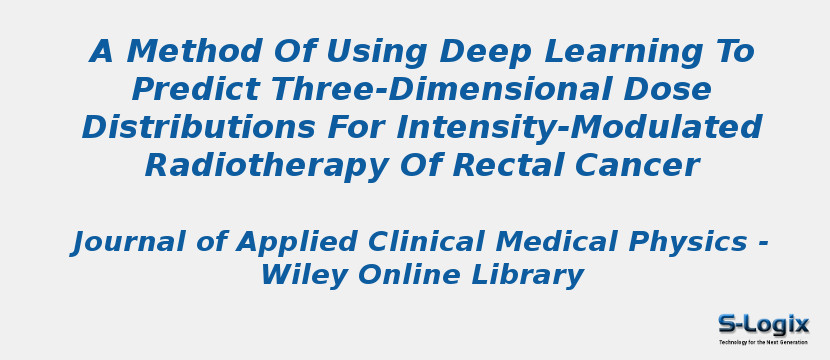Research Area: Machine Learning
To develop and test a three-dimensional (3D) deep learning model for predicting 3D voxel-wise dose distributions for intensity-modulated radiotherapy (IMRT).A total of 122 postoperative rectal cancer cases treated by IMRT were considered in the study, of which 100 cases were randomly selected as the training–validating set and the remaining as the testing set. A 3D deep learning model named 3D U-Res-Net_B was constructed to predict 3D dose distributions. Eight types of 3D matrices from CT images, contoured structures, and beam configurations were fed into the independent input channel, respectively, and the 3D matrix of dose distributions was taken as the output to train the 3D model. The obtained 3D model was used to predict new 3D dose distributions. The predicted accuracy was evaluated in two aspects: (a) The dice similarity coefficients (DSCs) of different isodose volumes, the average dose difference of all voxels within the body, and 3%/5 mm global gamma passing rates of organs at risks (OARs) and planned target volume (PTV) were used to address the spatial correspondence between predicted and clinical delivered 3D dose distributions; (b) The dosimetric index (DI) including homogeneity index, conformity index, V50, V45 for PTV and OARs between predicted and clinical truth were statistically analyzed with the paired-samples t test. The model was also compared with 3D U-Net and the same architecture model without beam configurations input (named as 3D U-Res-Net_O).The 3D U-Res-Net_B model predicted 3D dose distributions accurately. For the 22 testing cases, the average prediction bias ranged from −1.94% to 1.58%, and the overall mean absolute errors (MAEs) was 3.92 ± 4.16%; there was no statistically significant difference for nearly all DIs. The model had a DSCs value above 0.9 for most isodose volumes, and global 3D gamma passing rates varying from 0.81 to 0.90 for PTV and OARs, clearly outperforming 3D U-Res-Net_O and being slightly superior to 3D U-Net. This study developed a more general deep learning model by considering beam configurations input and achieved an accurate 3D voxel-wise dose prediction for rectal cancer treated by IMRT, a potentially easier clinical implementation for more comprehensive automatic planning.
Keywords:
Author(s) Name: Jieping Zhou,Zhao Peng,Yuchen Song,Yankui Chang,Xi Pei,Liusi Sheng,X. George Xu
Journal name: Journal of Applied Clinical Medical Physics
Conferrence name:
Publisher name: Wiley
DOI: 10.1002/acm2.12849
Volume Information: Volume 21, Issue 5
